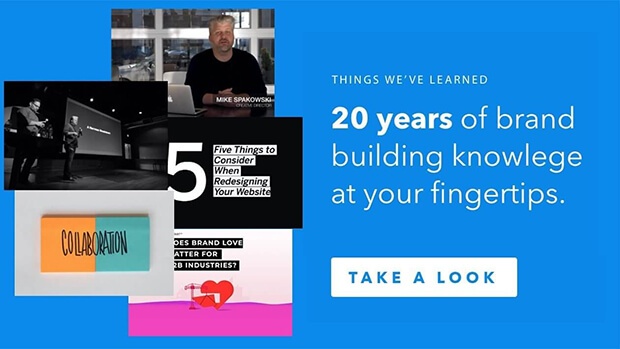Deceptive Design: Why It Happens, and How To Avoid It
Design is manipulative. It says “look here, not there.” It nudges people toward a specific decision, whether it’s which button they should click on a website, the direction they should walk through a museum, or the decision to “impulse buy” a candy bar strategically placed near the checkout.
Design has power. But today, consumers have power too. They’re more informed, more vigilant and more vocal. Design will always be manipulative, but it can no longer be deceptive.
At a time when transparency and trust are major drivers of brand love and loyalty, how can designers and marketers ethically, openly and successfully guide consumers down a specific path?
Consider the advertorial, a staple of advertising since the mid-20th century. Advertorials are designed to look like news articles, but they’re not news, and they’re not objective – they’re written to sell a product. The brand pays for the space, and the magazine or newspaper publishes the content.
Advertorials are the forefather of branded content – for example, those pieces you see on Buzzfeed that are written to promote specific products. Branded content is just fine when the publisher is clear about its origin (“This article brought to you by [Brand]”) and the piece offers helpful tips and credible information. But when brands go out of their way to hide the pay-for-play aspect, disguising their marketing materials as news, that’s deceptive design.
In the U.S. and elsewhere, regulations have helped consumers discern the difference between ads and articles. You may notice magazines printing the word “ADVERTISEMENT” above ads that look like reporting. Magazines that don’t comply with this regulation are subject to fines. However, as new forms of branded content emerge, businesses may be tempted to find new ways to create the illusion of objectivity. This is the opposite of transparency, and it separates brands from consumers, breaking trust.
So how can we move away from design that intentionally misinforms, misleads, excludes, or obscures truth?
First, we have to understand why people – even good people – are driven to use deceptive tactics. Deception has its origins in nature. When animals use camouflage, for example, they’re using deception as a means of survival. It’s a fear-based mechanism. You could argue that deceptive design or other deceptive business practices are also based in fear: fear of going out of business, fear of not hitting your goals, fear of a coworker outshining or outearning us, fear of disappointing superiors or stakeholders. Fear can be a great motivator, but it’s rarely a great foundation for thoughtful decision making.
It’s important to examine our motivations and intentions when we design: our personal intentions, our professional intentions, and the intentions of the people or organizations we’re designing on behalf of. We should never let fear drive our work.
For design to be a truly transformative force, it should be based on the desire to include, inform, inspire and help people make educated choices. That means accurate, clear calls to action. It means content and content platforms designed to help consumers easily discern the credibility and objectivity of the information placed in front of them. No more “dark patterns” – deceptive user interfaces that trick visitors into actions. Less Photoshop magic. Fewer hidden fees. We all deserve better.
Design will always be manipulative, but a transparent approach is better for business (and the conscience).


